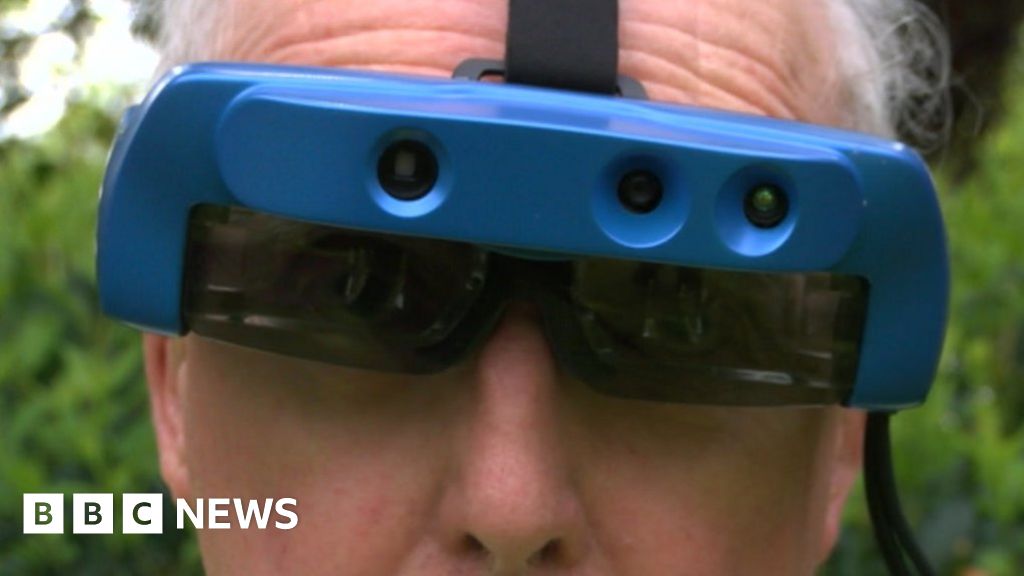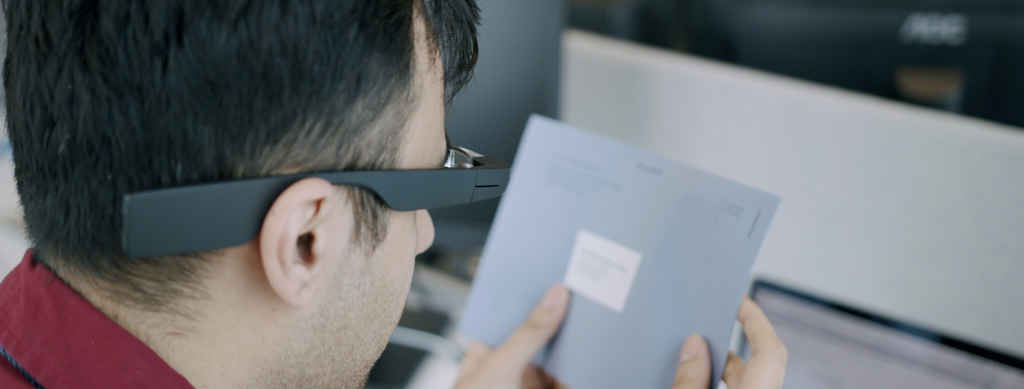Discover Advanced Assistive Instruments for People With Aesthetic Impairments
The landscape of assistive technology for individuals with aesthetic impairments is progressing rapidly, offering an array of ingenious tools that enhance autonomy and interaction. From wise glasses that flawlessly merge visual input with auditory assistance to innovative navigation applications that redefine spatial understanding, these devices are improving opportunities.
Smart Glasses Innovations
Smart glasses represent a considerable improvement in assistive innovation for individuals with visual disabilities. These innovative devices integrate various functions developed to improve the individual's interaction with their setting. Outfitted with sensing units and cams, smart glasses can capture real-time visual information, which is after that refined and conveyed to the customer via sound feedback or haptic experiences. This performance enables individuals to receive instant summaries of their environments, enhancing their capacity to involve and browse with the world.
Moreover, advancements in expert system have actually even more improved the capabilities of clever glasses. Machine learning algorithms can acknowledge faces, checked out message, and identify items, making them invaluable devices for everyday tasks. Customers can receive auditory hints that provide context concerning their atmosphere, cultivating independence and self-confidence.
In addition, the ergonomic layout and light-weight nature of lots of wise glasses make them suitable for long term use, guaranteeing convenience while improving capability. As these tools continue to evolve, they hold the potential to reinvent the means individuals with visual problems experience their daily lives, connecting the space in between availability and modern technology. The ongoing research and growth in this area guarantee to increase the opportunities for clever glasses, making them a necessary part of modern-day assistive tools.
Navigating Application and Equipment
Many navigation apps and devices have actually arised as essential resources for individuals with aesthetic disabilities, dramatically enhancing their capacity to go across strange settings. These modern technologies utilize general practitioner functionality, audio hints, and real-time data to offer customers with precise navigating support.
One popular example is the Aira app, which connects individuals to experienced agents who can supply aesthetic summaries of environments and navigation assistance through a live video clip feed. This solution improves the user's spatial awareness and self-confidence while browsing. An additional notable device is Seeing Eye GPS, which supplies voice-guided navigating and factors of rate of interest, enabling users to access important info regarding their environments.

As technology proceeds to advancement, the development of extra sophisticated navigation devices promises to additional encourage people with visual problems, facilitating seamless mobility and assimilation right into varied environments. Such innovations are critical in promoting a more comprehensive culture.
Braille Innovation Improvements
In recent years, advancements in Braille technology have actually considerably transformed just how people with visual disabilities access find info and engage with the world around them. The development of portable Braille displays has revolutionized reading by enabling customers to connect wirelessly to mobile phones, computers, and tablet computers. These devices convert text right into Braille in real-time, allowing seamless interaction with electronic web content.
In addition, innovative Braille printers have arised, boosting the manufacturing of tactile materials. Modern embossers are quicker and a lot more efficient, permitting for the fast production of Braille records and academic materials. This effectiveness reduces the moment and cost related to generating Braille resources, making them much more obtainable to companies and schools.
In addition, the assimilation of Braille with various other modern technologies, such as synthetic intelligence and artificial intelligence, has opened brand-new opportunities for individualized learning experiences. Voice recognition and synthesis innovations can enhance Braille, providing an inclusive technique to details dissemination.
As the demand for comprehensive education and learning and office settings grows, these technical advancements play a critical function in encouraging individuals with visual impairments, guaranteeing they have equivalent access to info and chances in different elements of life.
Wearable Tools for Self-reliance
A growing array of wearable devices is enhancing freedom for people with aesthetic impairments, supplying cutting-edge options that enhance navigation and day-to-day living. Braille displays and notetakers. These gadgets utilize advanced innovations to offer real-time feedback and assistance, promoting freedom in numerous settings

Wearable innovation additionally consists of smartwatches that can be programmed with ease of access features, making it possible for customers to receive notifications, track their areas, or perhaps ask for support with the touch of a switch. In addition, some tools incorporate expert system to examine the setting, offering sound descriptions of nearby objects or people.
Voice-Activated Assistive Solutions
Leveraging voice-activated assistive services has changed the landscape of assistance for people with aesthetic impairments, supplying hands-free interaction and access to a variety of jobs. These innovations make use of natural language handling and artificial knowledge to make it possible for individuals to execute daily activities via easy voice commands.

Moreover, current advancements in voice acknowledgment precision have boosted the individual experience substantially, fitting varied accents and speech patterns. This inclusivity makes certain that even more individuals can benefit from these modern technologies, cultivating a higher sense of autonomy.
Verdict
In verdict, the development of advanced assistive devices substantially enhances the freedom and top quality of life for individuals with aesthetic disabilities. Innovations such as smart glasses, navigating apps, Braille technology, wearable tools, and voice-activated services jointly cultivate an even more comprehensive atmosphere. These modern technologies equip customers to navigate their surroundings with self-confidence and engage more totally with the world, eventually advertising greater accessibility and equal possibilities for people facing aesthetic obstacles.
The landscape of assistive innovation for people with aesthetic impairments is progressing swiftly, presenting a variety of cutting-edge devices that enhance freedom and involvement.Smart glasses stand for a significant innovation in assistive technology for people with aesthetic impairments. As these gadgets proceed to develop, they hold the possible to transform the means people with visual impairments experience their daily lives, connecting the void in between accessibility and innovation.In current years, innovations in Braille technology have significantly transformed just how people with aesthetic problems access information and engage with the globe around them. These technologies empower users to navigate their surroundings with self-confidence and involve even more completely with the world, eventually promoting greater ease of access and equal opportunities for people encountering aesthetic obstacles.